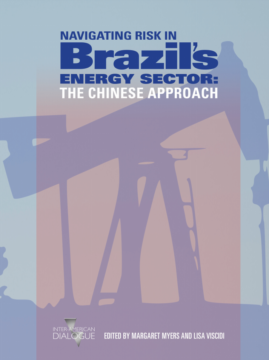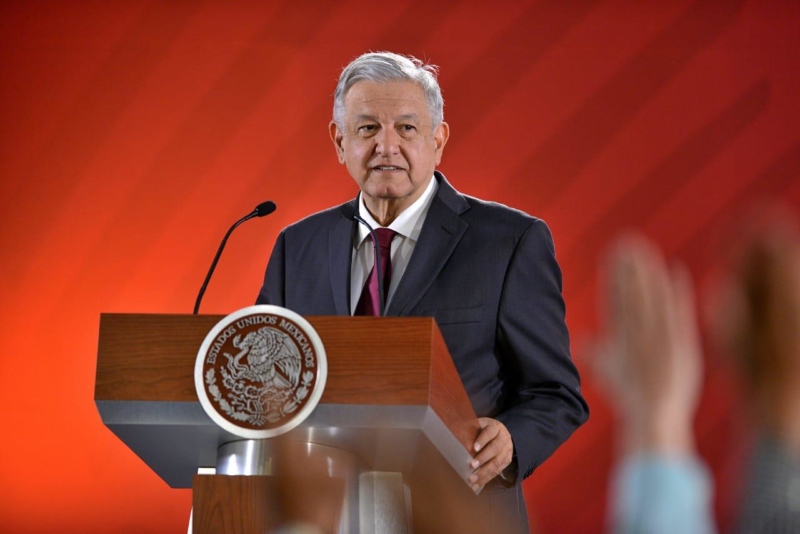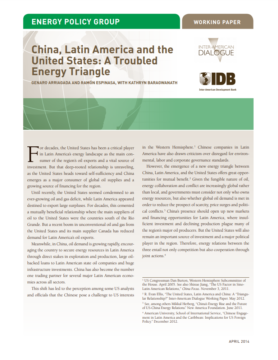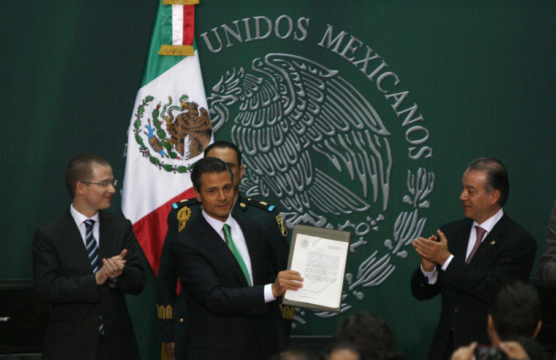
Navigating Risk in Brazil’s Energy Sector
Brazil’s oil and gas and electricity sectors are an important destination for Chinese direct investment.
A Publication of The Dialogue
Moody’s Investors Service last month lowered its ratings outlook on the North American Development Bank from stable to negative, citing the Mexican government’s proposed regulatory changes in the power sector, which it said would be “detrimental” to the renewable energy sector and the bank’s lending portfolio. What are the most important changes that the government of Mexican President Andrés Manuel López Obrador has introduced in the country’s power sector since taking office in December 2018? What effects have they had on the sector’s investment climate? Are more and similar changes expected in the period ahead, and how can companies prepare for them?
Pedro Niembro, senior director, and Geoffrey Jones, senior vice president, both at Monarch Global Strategies: “In a blow to private energy investment, the Energy Regulatory Commission (CRE) supported President López Obrador’s call for the adoption of 17 key points to his energy policy, stating that most could be quickly implemented without major changes to the existing legal framework. While AMLO applauded CRE’s conclusion, he left the door open to further changes should Pemex and CFE see further declines in their dominant market positions, including the possibility of changing the constitution to reverse the energy reform. The CRE’s accommodation of AMLO’s energy plan is just the latest of many measures from them and the Energy Ministry (SENER) that have placed private investments in Mexico’s power sector at risk. Avoiding granting permits for renewable power generation or fuel imports has unofficially been the norm for some time and will severely limit the NADB’s growth potential by reducing the number of potential projects for investment. The policy most negatively affecting the NADB’s portfolio in Mexico, however, is the decision by CENACE, at SENER’s urging, to bypass price-based power dispatch in favor of CFE’s more expensive generation. This would sharply curtail demand for renewable generation and hinder a project’s ability to service its debt. To be sure, the investor protection clauses in the USMCA and other FTAs offer cover for existing investors who could bring a cascade of international challenges. But the fact is that more than 150 renewable projects under development and their $40 billion in investment are at risk. Meanwhile, it was discouraging to see that the electricity sector was not mentioned in the recent infrastructure plan, even though such projects would support the Mexican economy’s recovery.”
Natalia Cosio, attorney, and Larry Pascal, member of the Energy Advisor board and chairman of the Americas practice group, both at Haynes & Boone: “Earlier this year, the López Obrador administration released a new power policy that in part modifies some of the goals of the 2013 energy reforms. First, the Mexican national grid operator (CENACE) issued an order suspending all pre-commissioning tests of intermittent wind and solar power plants. Later, the Energy Ministry (SENER) consolidated this idea and released its ‘Policy on Reliability, Safety, Continuity, and Quality for the National Electric System,’ which, among other things, grants the Energy Regulatory Commission (CRE) authority to require from generation permit applicants a new interconnection feasibility opinion, to be issued by CENACE, thereby placing an additional obligation on power developers. The current administration has also decided to favor CFE by prioritizing power generation in its plants, among other actions. Furthermore, the president’s party has proposed a constitutional amendment to repeal the 2013 energy reform, which is pending legislative debate. Overall, these regulatory developments may discourage investment in future renewable energy projects, although in the past the government has successfully negotiated agreements out of court with generation companies. However, several environmental groups have challenged the CENACE order and the SENER policy in court actions, and the courts have temporarily suspended these measures until a definitive ruling. Finally, CRE’s 2020 regulatory program envisions additional changes to the power sector, which will give market actors an opportunity to comment on proposed changes.”
Juan Pomés, senior associate at Freshfields Bruckhaus Deringer: “The López Obrador administration has taken several measures that negatively affect private investments in the electricity sector, including suspending long-term electricity auctions, interfering with clean energy certificates and spot market regulations, increasing transmission tariffs and delaying approvals for clean-energy projects. The government’s interference in the power sector appears to be driven by its desire to regain control of the energy sector through state-owned CFE and Pemex. That political objective cannot be squared with Mexico’s energy reform of 2013-2014, which limited state involvement in the sector in favor of private investment. Foreign investors responded to these reforms by investing billions of dollars in the country to develop clean energy projects. Many of these investors and their investments will be protected by investment protection treaties that Mexico has signed with more than 40 countries. These treaties require Mexico to protect the legitimate, investment-backed expectations of covered foreign investors at the time of investment, including expectations created by the regulatory framework that Mexico put in place to attract that investment. These treaties also protect investors against arbitrary state conduct. Importantly, when an investor believes that Mexico has breached one of the treaty standards, the investor may file a claim for damages against Mexico before an independent international arbitration tribunal. That is, investors may have access to claims against the government outside of the Mexican court system. Foreign investors in Mexico’s power sector should carefully consider whether they are protected by an investment treaty.”
Dino Barajas, partner at DLA Piper: “Mexico’s renewable energy sector has faced a full-frontal assault from the administration of President López Obrador. The overt shift in federal policies favoring the development of fossil fuel power generation facilities and openly inhibiting the further development of the renewable energy sector has been rationalized as necessary to support Mexico’s existing domestic hydrocarbon production and a means of limiting foreign investment in and control over the country’s electricity sector. The country moved away from pure economic dispatch considerations, which would have provided the country’s end users with the most cost-efficient power production available from its existing diversified power generation assets, and instead prioritized the utilization of power production from the government-owned or -contracted fossil fuel power generation assets. There is a rational government objective underlying this shift, given that the government wants to maintain a domestic market for natural gas produced by Pemex, and prioritizing generation of electricity from natural gas power facilities for domestic consumption helps achieve this goal. Maximizing the utilization of Pemex-produced natural gas avoids the need to return to a period, as it happened in the 1980s and early 1990s, when Pemex would simply flare unutilized natural gas. Additionally, given that many of the currently CFE-contracted natural gas-fired power plants that private investors own are structured as energy conversion plants to which CFE supplies Pemex-sourced natural gas and purchases dispatched electricity, the government has rationally prioritized the utilization of sunk costs by prioritizing the dispatch of these assets. The short-sightedness of the government’s reversal in previously adopted market-driven policies favoring renewable energy is that Mexico was on the verge of becoming a world leader in renewable energy development. The development of renewable energy was also helping Mexico lower its natural gas imports from the United States, becoming more energy independent.”
Fluvio Ruiz, former Pemex board member: “In line with its electoral platform, the government has reoriented electricity policy with the aim of strengthening the CFE as the sector’s main actor. However, the way in which the government has implemented its decisions has provoked a climate of growing hostility with private investment and has led to allegations that it belittles Mexico’s commitments to the fight against climate change. In the power sector, the energy reform defined essential aspects, such as the vertical and horizontal separation of the CFE and a greater importance of the market in promoting renewable energies. Both are counter to the current government’s political orientation. Thus, the brake on renewable energies is ‘collateral damage,’ a product of the contradictions between the government’s electricity policy and the institutional design inherited from the previous administration. This has led to legal demands from operators, as well as a constitutional controversy. The legal and institutional limitations that the government’s electricity policy faces will be difficult to overcome until the legislation is modified, respecting contractual commitments that have already been made. A modified framework should serve as a basis to decisively promote the energy transition, with an adequate socialization of its economic, social and political costs.”
Ximena Herrera-Bernal and Alexandro Padrés, both partners at Shearman & Sterling: “Secondary regulations that AMLO has issued—coupled with his public speeches—seek to prioritize investments by state-owned companies (Pemex and CFE), discouraging the development of existing and future renewable energy facilities. The main actions of AMLO’s government include: 1.) suspending the interconnection of renewable projects during the pandemic, 2.) altering the grid dispatch order based on economic merit, favoring CFE-owned assets, 3.) suspending and further canceling ongoing and future public tenders for long-term and medium-term PPAs for renewable energy, 4.) changing rules governing clean energy certificates to allow CFE to earn certificates from legacy facilities, 5.) changing the wheeling charges applicable to legacy renewables projects and 6.) creating a new (but yet to be defined) category of ancillary costs payable by market participants. These actions have been highly controversial as they appear to contradict the legal framework deriving from the 2012 reforms, as evidenced by judicial reviews suspending the effects of such actions. Notwithstanding these challenges, sources have confirmed that AMLO is considering amending existing laws to reflect his vision for the energy sector, strengthening Pemex's and CFE's role in the market. It is uncertain whether these new measures will be upheld or if new laws will be enacted. Some players have delayed future investments in the Mexican energy market, while existing investors keep a close eye on domestic and international law remedies available in case any damages result from the enactment or enforcement of new energy regulations.”
Roxana Muñoz, AVP analyst at Moody’s: “The current government has reverted various previously enacted policies that sought to create a more diverse energy sector characterized by greater private sector involvement and increased reliance on the development of renewable energy. More specifically, the government has reinstated the role of Comisión Federal de Electricidad (CFE—Baa1 negative), Mexico’s electric utility, as the preponderant presence in the sector. The government suspended new energy auctions and in doing so rapidly restricted the opportunities for new investments in renewable energy in Mexico. For existing projects, added regulatory requirements have lowered the projected rates of return of those operations. The government will seek to further strengthen CFE’s market position through various regulatory changes that are in process, some of which are already being disputed in courts. In October 2019, Mexico’s Ministry of Energy amended the regulations for Clean Energy Certificates (CELs), expanding the CFE’s availability to compete for those CELs, negatively affecting the value of most private clean energy generators’ assets. Additionally, the government, through the National Center of Energy Control, canceled the long-term electricity generation auctions, closing the main mechanism to bring new private investments providing competitive energy prices. While not all the regulatory changes have been fully implemented, Mexico’s government will continue to pursue CFE’s consolidation as the leading power player in the market. Despite the fact that we do not expect an important increase in private investments, companies could still have some opportunities as CFE’s suppliers and government contractors.”
Laura Carlsen, director of the Americas program of the Center for Economic and Policy Research (CEPR): “The most important changes in Mexico’s energy sector can be summarized as, first, increased regulatory barriers to the production, distribution and sale of renewable energies and, second, a sizable hike in the rate charged for electricity transmission through the Federal Electricity Commission (CFE) system. While citing corruption and unfair subsidies to industry, undoubtedly true in some cases, the underlying reason for the changes is to favor Pemex as the major CFE supplier. The changes have created a chilling effect on foreign investment and protests from environmental groups, who filed an injunction citing contradictions with the constitutional mandate to promote clean and cheap energy. The court’s decision suspended the program. However, the decision is not definitive. Moody’s move to lower the NADB rating for ‘environmental risk’ is contradictory and sends a typically punitive message to a center-left government seeking to restructure the neoliberal-privatization model. But it highlights two very real concerns: the sustainability of Mexico’s energy program and the AMLO administration’s style of decision-making. In the interest of saving Pemex, the administration seems bent on a fossil-fuel future, which is no future at all. The issue is not really foreign investors versus public good, or even the specifics of the reforms, but rather the lack of sustainability and the poorly thought out consequences of the sudden change in the rules of the game for investors, primarily investment funds beholden to shareholders. Mexico is not on the path to fulfill its commitment to move to 35 percent renewables by 2024. But pressure for a sustainable energy plan must come from open public debate, not from corporate interests and the international financial community. The pending Law on Water that dismantles privatizing reforms and was developed through massive citizen participation could serve as an example.”
 The Latin America Advisor features Q&A from leaders in politics, economics, and finance every business day. It is available to members of the Dialogue’s Corporate Program and others by subscription.
The Latin America Advisor features Q&A from leaders in politics, economics, and finance every business day. It is available to members of the Dialogue’s Corporate Program and others by subscription.
Brazil’s oil and gas and electricity sectors are an important destination for Chinese direct investment.
The US’ standing as the main consumer of Latin America’s oil exports is unraveling as China emerges as a major consumer of global oil supplies.
The results of Mexico’s energy reforms may fall well short of government promises and public expectations.
 The government of Mexican President Andrés Manuel López Obrador has introduced major changes to the country’s power sector since taking office in December 2018. // File Photo: Mexican Government.
The government of Mexican President Andrés Manuel López Obrador has introduced major changes to the country’s power sector since taking office in December 2018. // File Photo: Mexican Government.

 Video
Video